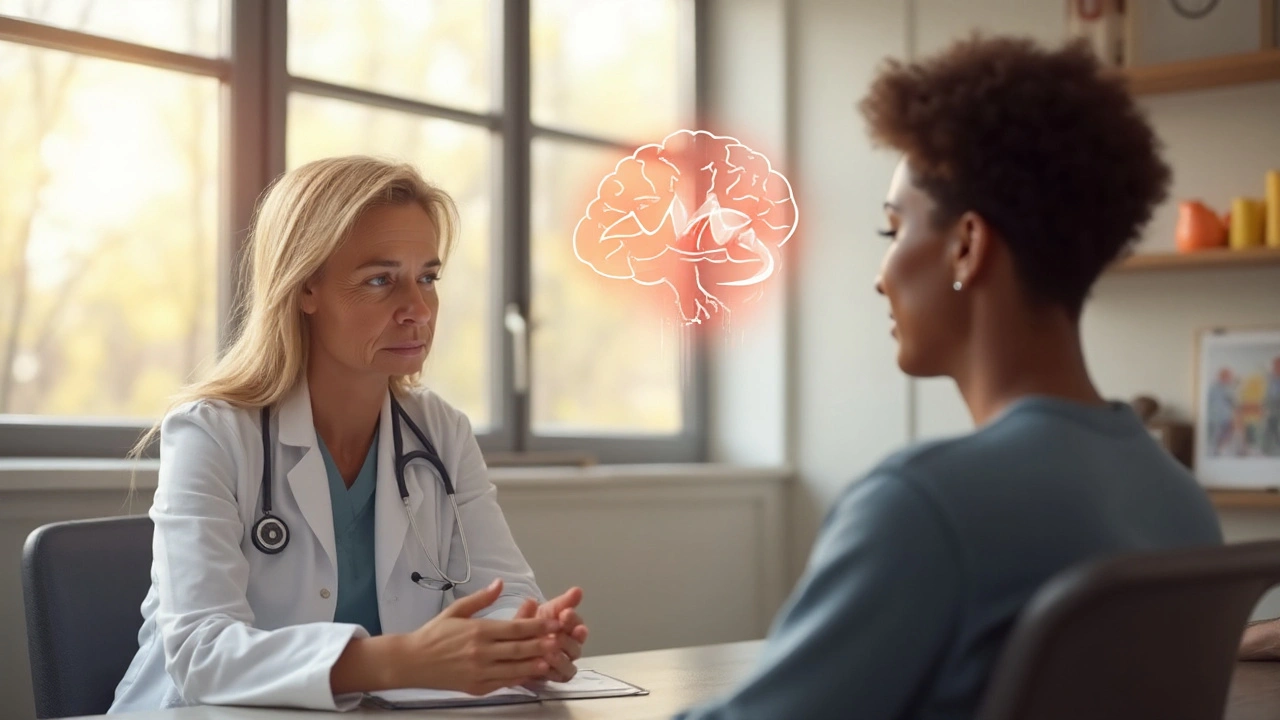Antidepressant Interactions: What to Watch For
Starting an antidepressant can feel like a big step toward feeling better. But the medication doesn’t work in a vacuum – it meets the rest of what you take every day. Knowing the common combos that cause trouble can save you from headaches, unwanted side effects, or even serious health risks.
Most people think only prescription meds matter, yet over‑the‑counter drugs, herbal supplements, and even some foods can change how an antidepressant works. The changes can make the antidepressant weaker, stronger, or cause new problems like high blood pressure, bleeding, or a dangerous rise in serotonin levels.
Biggest Interaction Culprits
SSRIs and Blood Thinners. SSRIs (like fluoxetine, sertraline, or citalopram) can thin your blood a bit. Pair them with aspirin, ibuprofen, warfarin, or other anticoagulants and you might see more bruising or nosebleeds. If you need both, your doctor may check your blood more often.
MAOIs and Certain Foods. Monoamine oxidase inhibitors (MAOIs) require a strict diet. Cheese, cured meats, soy sauce, and red wine contain tyramine, which can cause a sudden spike in blood pressure. Even a small bite can trigger a headache, pounding pulse, or dizziness.
St. John’s Wort. This popular herbal mood booster blocks the same enzymes that many antidepressants use. Take it with an SSRI or SNRI and you risk serotonin syndrome – a condition that feels like agitation, shaking, fever, and confusion. It’s better to avoid it unless a doctor says otherwise.
OTC Pain Relievers. Combination products that contain acetaminophen or ibuprofen are usually okay, but be careful with products that also have dextromethorphan (found in cough medicines). Mixing dextromethorphan with certain antidepressants can also lead to serotonin syndrome.
Alcohol. A little wine might seem harmless, but alcohol can amplify the sedating effects of many antidepressants, especially tricyclics and mirtazapine. You could feel extra drowsy, have slower reaction times, or get a stronger hangover.
How to Keep Your Mix Safe
First, keep a running list of everything you take – prescription meds, OTC drugs, vitamins, and herbal supplements. Show this list to every doctor and pharmacist, even if you think something is “just a vitamin.”
Second, read the label. Many OTC meds warn about interactions with antidepressants. If the warning isn’t clear, a quick call to your pharmacy can clear it up.
Third, start new meds one at a time. If you add a new prescription, give your body a few days before adding another drug. This helps you notice if a new side effect shows up and tells the doctor which drug is causing it.
Finally, watch for red‑flag symptoms. Fever, rapid heartbeat, severe headache, shaking, or sudden changes in mood could signal serotonin syndrome. Bleeding gums, easy bruising, or black‑tinted stools might mean a blood‑thinning interaction. If any of these appear, call a health professional right away.Staying on top of antidepressant interactions isn’t about being scared – it’s about making sure the medication does its job without unwanted surprises. Keep an open line with your healthcare team, stay informed, and you’ll get the most benefit from your treatment.
Amlodipine and Mental Health: How It Impacts Anxiety and Depression
Explore how Amlodipine, a common blood‑pressure drug, can affect anxiety and depression, backed by clinical evidence and practical advice.
